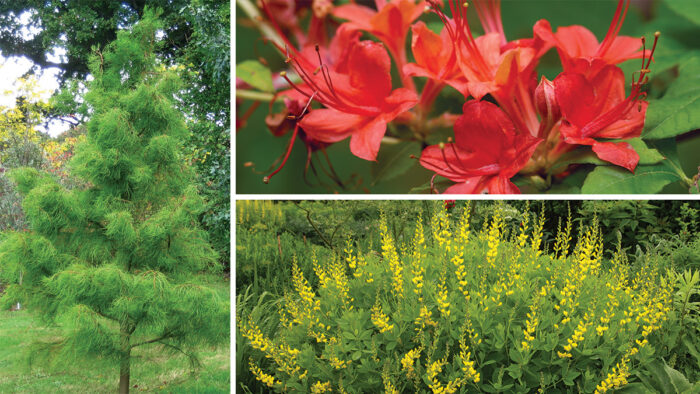
The South has much more to offer the rest of the country than the culinary delights of barbecue pork, pimento cheese, and fried green tomatoes. Strolling through woodlands of the Gulf Coast states at almost any time of year, you will be wowed by a dizzying array of amazing ornamental plants. While many of those plants are only fit for southern gardens, a surprising number of southern native plants are perfectly adaptable to more northern locales.
Trees Bring Southern Style to Cooler Climates
Two-winged silverbell greets spring with a flurry of flowers
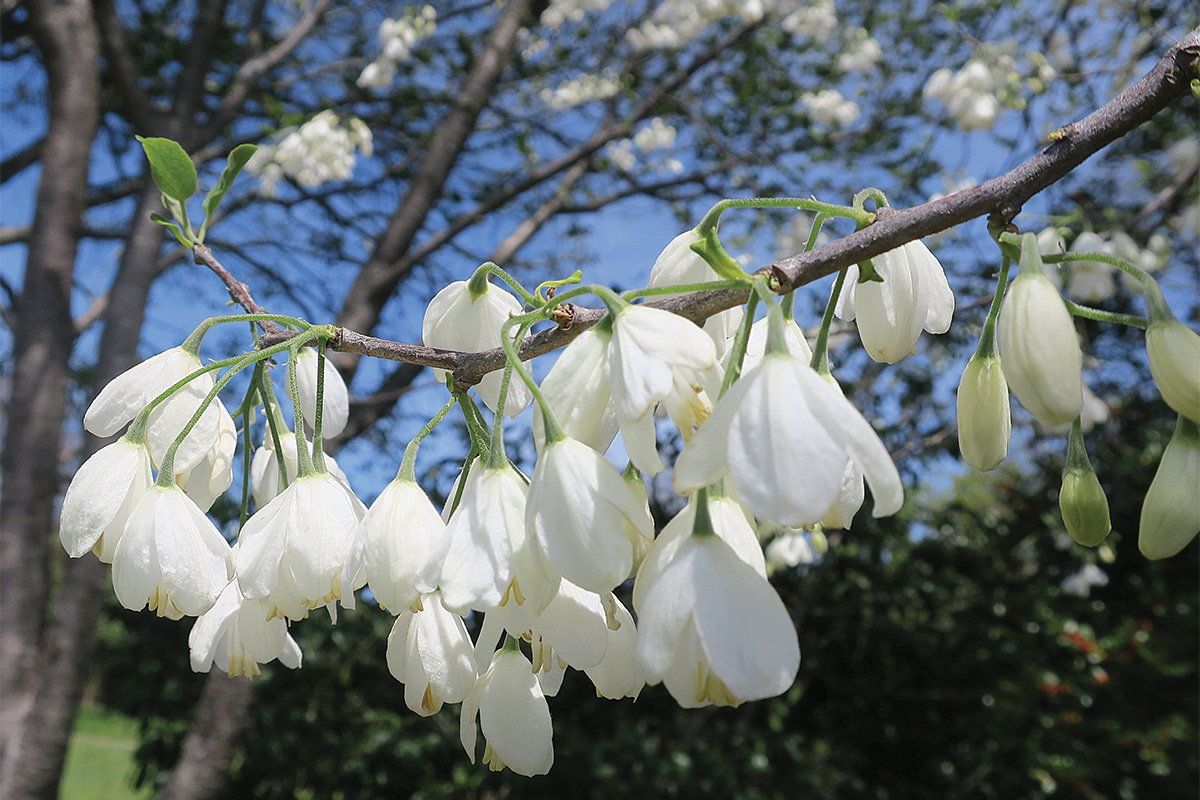
Name: Halesia diptera
Zones: 5–8
Size: 20 to 30 feet tall and wide
Conditions: Full sun to partial shade; average to moist, well-drained soil
Natural habitat and native range: Coastal floodplains and swampy areas scattered along the Gulf Coast from South Carolina to Texas
A lovely denizen of southern wetlands, two-winged silverbell can also thrive in more ordinary garden soil. You would think that it had no business being hardy to Zone 5, but it often seems to prefer the colder winters of more northern regions. The white bell-shaped flowers appear in midspring. At up to 1½ inches wide, they are the largest in the Magniflora group; that explains why this plant is sometimes sold as Halesia diptera var. magniflora. Two-winged silverbell is one of our easiest native flowering trees, usually seen as a multistemmed specimen with smooth, gray bark, and reliable buttery yellow fall color. The flower show mixes with and extends the bloom season of other native spring-flowering trees, such as dogwoods (Cornus spp. and cvs., Zones 3–9) and serviceberries (Amelanchier spp. and cvs., Zones 3–8).
Pond cypress festoons its upright form with feathery foliage
Name: Taxodium distichum var. imbricarium syn. Taxodium ascendens
Zones: 5–9
Size: 30 to 70 feet tall and 15 to 20 feet wide
Conditions: Full sun; average to wet soil
Natural habitat and native range: Widely scattered wetland areas from Virginia south to Florida and west to Louisiana
Among the more recognizable southern trees is pond cypress. This upright deciduous conifer is especially distinctive when new spring growth emerges as a multitude of feathery, spring green branchlets standing straight up along its branches. Its brilliant orange-russet fall color and pyramidal habit are a striking sight whether along a waterside in its native habitat or in a home landscape. In a naturalistic planting it blends seamlessly with sugar maples (Acer saccharum, Zones 3–8) and aspens (Populus spp. and cvs., Zones 2–10), even in soil that is much drier and more compacted than in its native wetland habitats.
Shrubs Add Another Layer of Southern Charm
Swamp cyrilla is a magnet for small pollinators
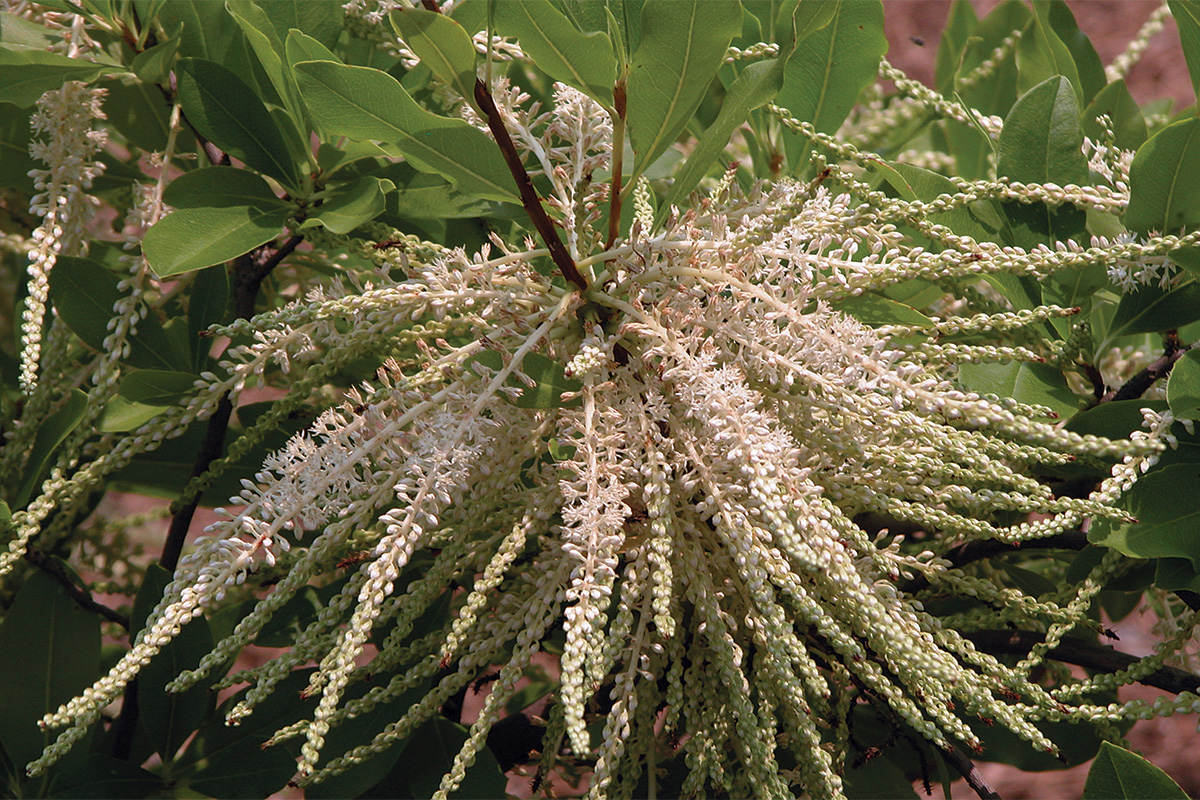
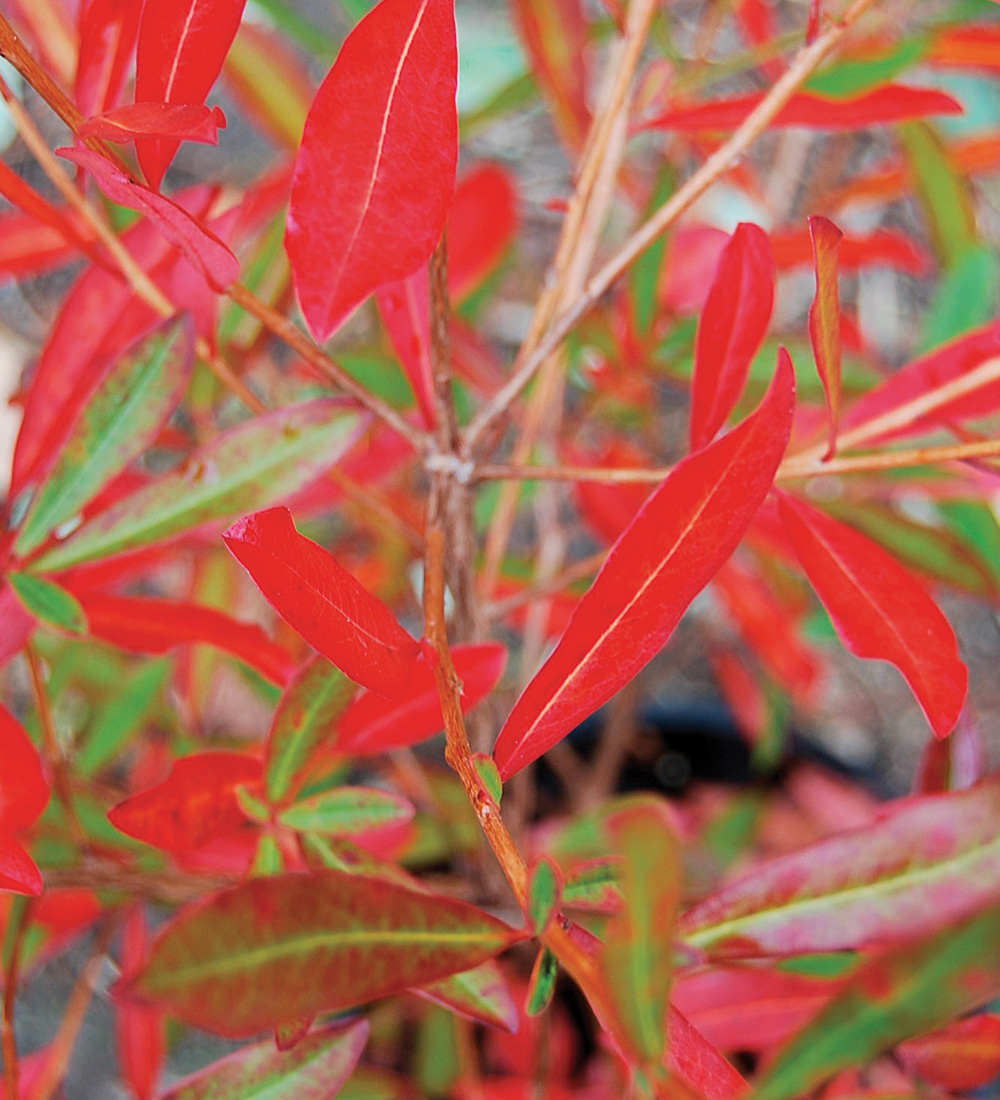
Name: Cyrilla racemiflora
Zones: 5–11
Size: 15 to 25 feet tall and wide
Conditions: Full sun to partial shade; moist to wet, well-drained soil rich in organic matter
Natural habitat and native range: Wet bogs to dry, sandy ridges from Virginia along the coast to Texas, as well as Central America, South America, and the Caribbean islands
Some of the very best ornamental native plants in the region are underutilized, even in southern gardens. Swamp cyrilla is among those plants that deserve a place in the spotlight. Throughout its native range it can be found growing in a wide range of conditions, and it brings that adaptability to the landscape, tolerating soil extremes once established in sun to partial shade. It typically is grown as a shrub, but in average to dry spots it will ultimately form a small tree up to 25 feet tall. In damp areas like pond edges it will often form erosion-controlling thickets. The narrow, leathery leaves of swamp cyrilla can be evergreen in warmer areas but are deciduous farther north and turn brilliant shades of red to orange in fall. Its cinnamon bark is also quite beautiful. The summer display of small flowers held on pointed racemes attracts an enormous range of solitary bee and wasp pollinators. A plant in full flower shimmers with a cloud of small pollinators for nearly a month.
Plumleaf azalea adds a flash of late summer color to the understory
Name: Rhododendron prunifolium
Zones: 5–9
Size: 10 to 15 feet tall and wide
Conditions: Partial shade; moist, acidic, well-drained soil
Natural habitat and native range: Forested ravines and stream banks in scattered locations in Georgia and Alabama
Another shrub that deserves more love is the latest bloomer of all our native deciduous azaleas. Plumleaf azalea bears its orange to red, hummingbird-attracting flowers in late summer, making it a surprising but welcome addition to all the other deciduous, spring-flowering species. Like other members of the rhododendron tribe, it prefers a shady spot with moist, well-drained soil; once it is established, however, I find it to be more tolerant of bright sun and dry soil than others. This plant is quite toxic if ingested, so if you have a pet that grazes on your shrubs, be aware. Its bright blossom color is very welcome in the midst of summer and looks amazing when the plant is grouped with other summer-flowering perennials such as butterfly weed (Asclepias tuberosa, Zones 3–9) or cardinal flower (Lobelia cardinalis, Zones 3–9).
Why do some southern plants tolerate colder temperatures?Many of the plants in this article will thrive in locales that are cooler than their native ranges. One reason is that during the last ice age, glaciation pushed many plants south, but these species didn’t necessarily become less hardy. Alabama, for example, has incredibly diverse flora at the point where the Appalachian Mountains terminate. Many of the plants found there are much hardier than you would expect because they retained some cold tolerance as they were pushed from north to south and from high elevations to low. |
Southern Perennials Can Also Be Remarkably Hardy
You will love the sunny disposition of ‘Screamin’ Yellow’ baptisia
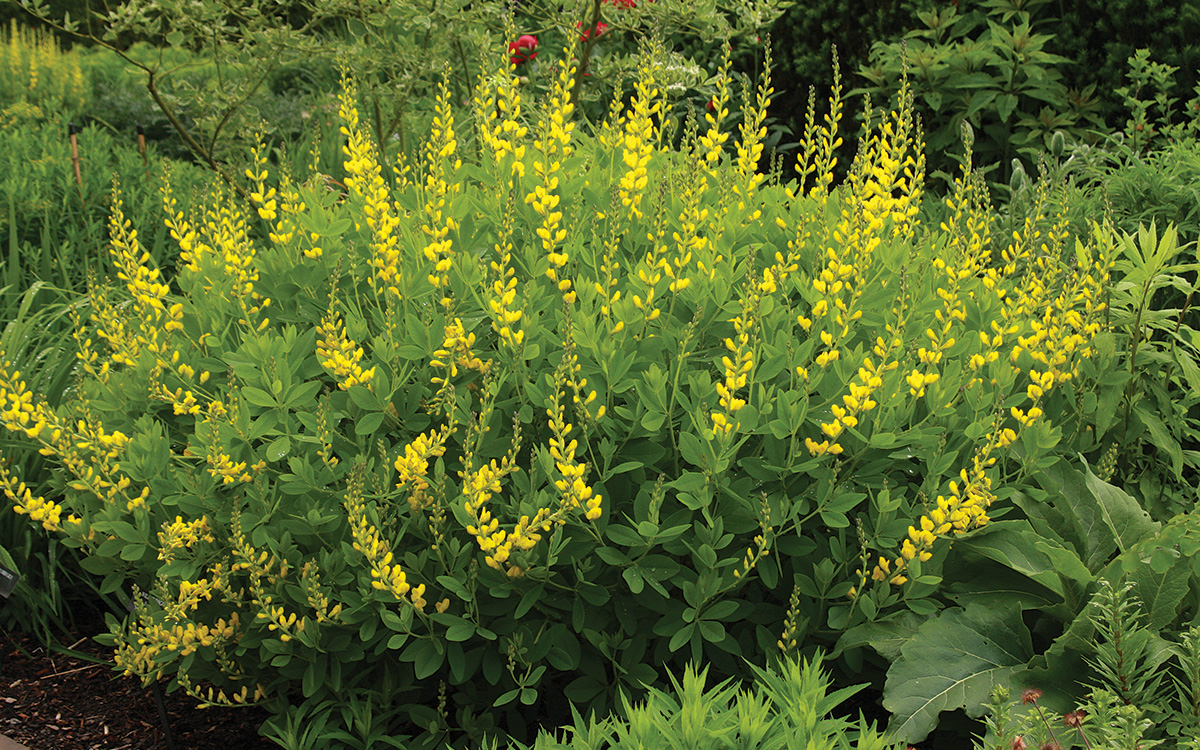
Name: Baptisia sphaerocarpa ‘Screamin’ Yellow’
Zones: 5–9
Size: 2 to 3 feet tall and 2 to 5 feet wide
Conditions: Full sun; average to dry, well-drained soil
Natural habitat and native range: Grasslands and prairies of the lower Midwest and the Gulf Coast states
A hardy rhododendron may not be too surprising, but herbaceous perennials native to the South can also be quite cold tolerant. One I would not be caught without in my garden is the south-central U.S. native yellow baptisia, especially the exceptional cultivar ‘Screamin’ Yellow’. This mounded, shrubby-looking perennial has spikes of large yellow pea flowers held well above the foliage in midspring. Once established, it is a durable survivor in a sunny garden, mixing well with both hot-colored perennials as well as the blues of California lilacs (Ceanothus spp. and cvs., Zones 4–10).
Santa Fe phlox appreciates lean soil
Name: Phlox nana
Zones: 4–8
Size: Up to 1 foot tall and 3 feet wide
Conditions: Full sun; average to dry soil; adaptable to a wide range of soil types
Natural habitat and native range: Desert grasslands and open woodlands from the dry side of Texas to Arizona
Native phlox are found across much of the country, but the underutilized and quite adaptable Santa Fe phlox is hardy all the way into Zone 4. The plant looks best when grown in very lean, well-drained soil or in sunny rock gardens, where it makes an evergreen cushion of narrow, sticky leaves with pink to lavender or white flowers. The early blooms are a welcome introduction to spring, especially when interplanted with native ephemerals like bloodroot (Sanguinaria canadensis, Zones 3–8) or trout lily (Erythronium spp. and cvs., Zones 3–9).
Dixie wood fern fends off deer with style
Name: Dryopteris × australis
Zones: 5–9
Size: 4 to 5 feet tall and 2 to 3 feet wide
Conditions: Full to partial shade; moist, rich, well-drained soil
Natural habitat and native range: Forests and wetlands of the Southeast from Maryland through Tennessee and as far west as Louisiana
Whenever gardeners gather to compare notes, the immediate question about any new plant is “Will deer eat it?” Ferns offer about the most reliable resistance to those voracious, long-legged rats, and an unusual natural hybrid worth growing is dixie wood fern. This robust fern can grow up to 5 feet tall when placed in rich, moist soil. The erect, fountain-like habit looks exceptional erupting through patches of the eastern native wild geranium (Geranium maculatum, Zones 3–8) or southern populations of bunchberry (Cornus canadensis, Zones 2–6).
Texas clematis will twine its way into your heart
Name: Clematis texensis
Zones: 4–8
Size: 8 to 12 feet tall and wide
Conditions: Full sun to partial shade; neutral to alkaline, well-drained soil
Natural habitat and native range: Limestone cliffs, rocky slopes, and stream beds of the southeastern Edwards Plateau in Texas
Those who have visited my garden know of my affinity for vines. My favorites are clematis, especially those designated as Type 3 for pruning. “Type 3” means the plant dies back to the ground in winter and should be cut to the ground to start anew in spring. While perhaps most things are bigger in the Lone Star State, Texas clematis is a showy but smaller-flowered species with vines that grow only about 12 feet long before dying back in winter. It does show the vaunted Texas-tough constitution, surviving even into Zone 4 locations. The bright red summer flowers are most abundant in sun but will tolerate partial shade, and the vines are quite-deer resistant. I like to use later-flowering vines like this to bring color to spring-flowering shrubs that have finished their early display, such as red flowering currant (Ribes sanguineum, Zones 6–9), or combine them with summer shrubs such as buttonbush (Cephalanthus occidentalis, Zones 5–9).
The warm beaches, great food, beautiful woodlands, and friendly folk of the South are reasons enough for a visit. If you plant some of our fabulous flora in your home garden as a souvenir, you’ll find that the plants are just as friendly as the people and will happily mingle with your own local natives, wherever you may live.
Mark Weathington is the director of the JC Raulston Arboretum in Raleigh, North Carolina.
Photos, except where noted: millettephotomedia.com
Sources
The following mail-order sellers offer many of the plants featured here:
- High County Gardens, Williston, VT; 800-925-9387; highcountrygardens.com
- Keeping It Green Nursery, Stanwood, WA; 360-652-1779; keepingitgreennursery.com
- Mail Order Natives, Lee, FL; 850-973-7371; mailordernatives.com
- Plant Delights Nursery, Raleigh, NC; 919-772-4794; plantdelights.com
Fine Gardening Recommended Products

DeWalt Variable-Speed Cordless Reciprocating Saw
- 18.31 x 6.13 x 4 inches
- 1-1/8-inch stroke length
- Variable speed trigger with 0-3000 spm
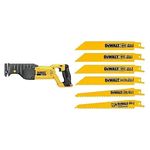
DeWalt Variable-Speed Cordless Reciprocating Saw with 6-Piece Saw Blade Set
- 18.31 x 6.13 x 4 inches
- 1-1/8-inch stroke length
- Variable speed trigger with 0-3000 spm
- DW4856 Metal/Woodcutting Reciprocating Saw Blade Set, 6-Piece
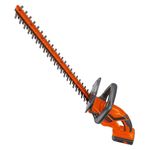
Black and Decker 22-inch Cordless Hedge Trimmer
- 38 x 7 x 7 inches
- 6.9 pounds
- 1 Lithium Ion battery required (included)
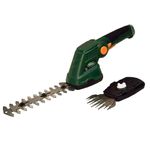
Scotts Cordless Grass-Shear/Shrub-Trimmer Combo
- 13.5 x 3 x 5 inches
- Uses a 7.2-Volt 2Ah high-capacity built-in lithium-ion battery; Includes a fast charger


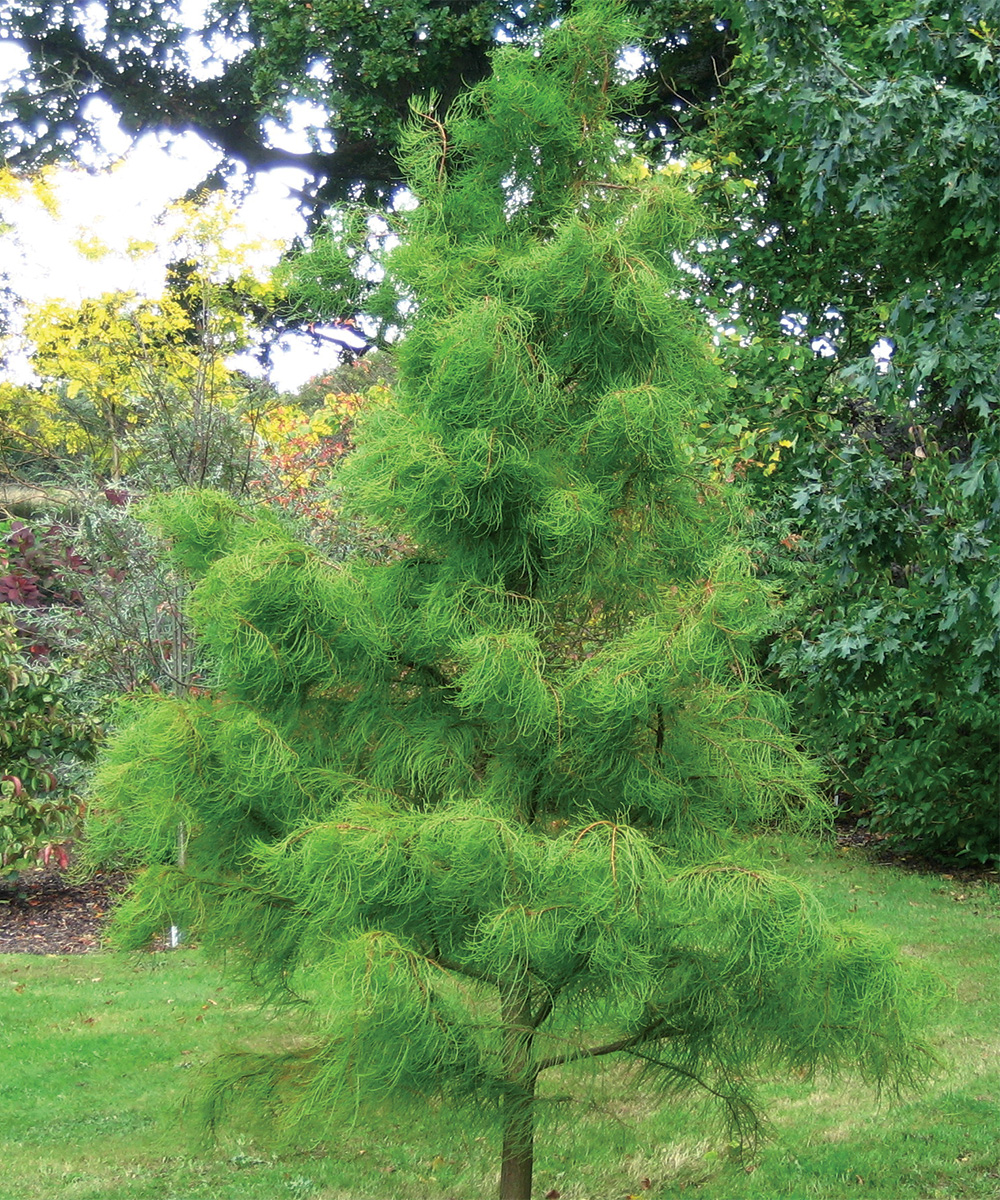
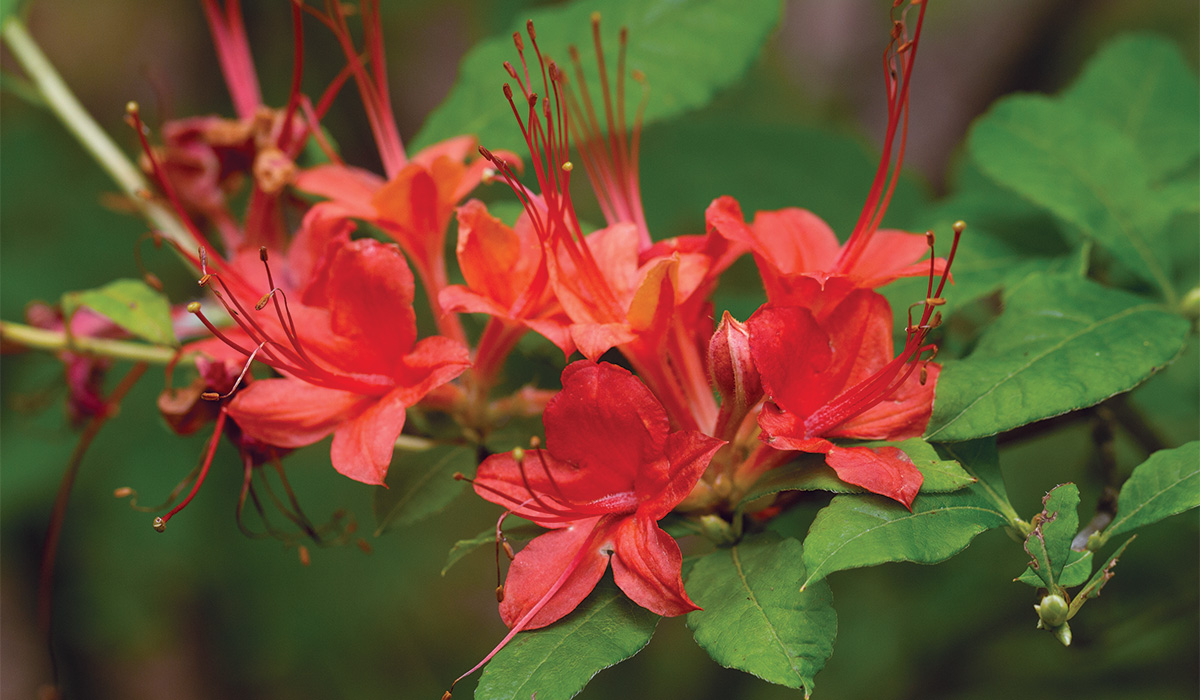
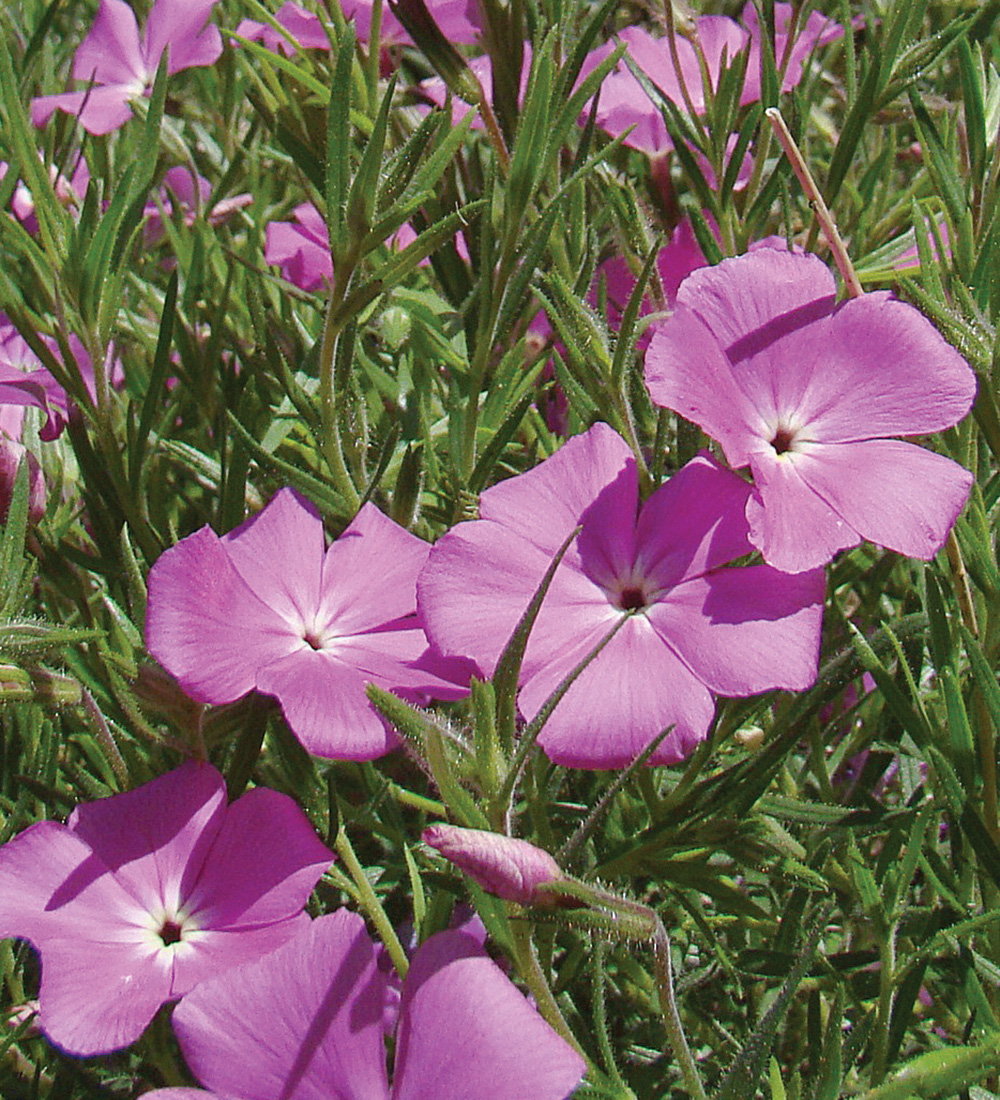
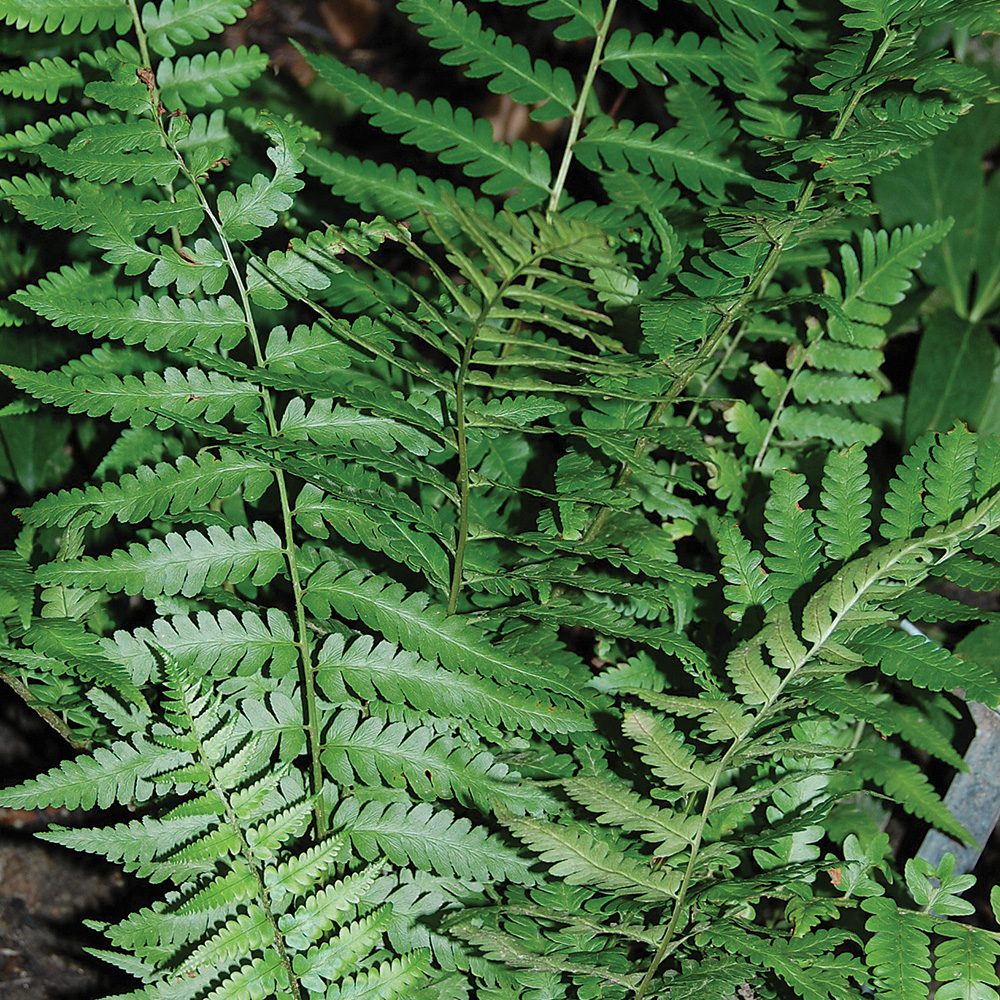
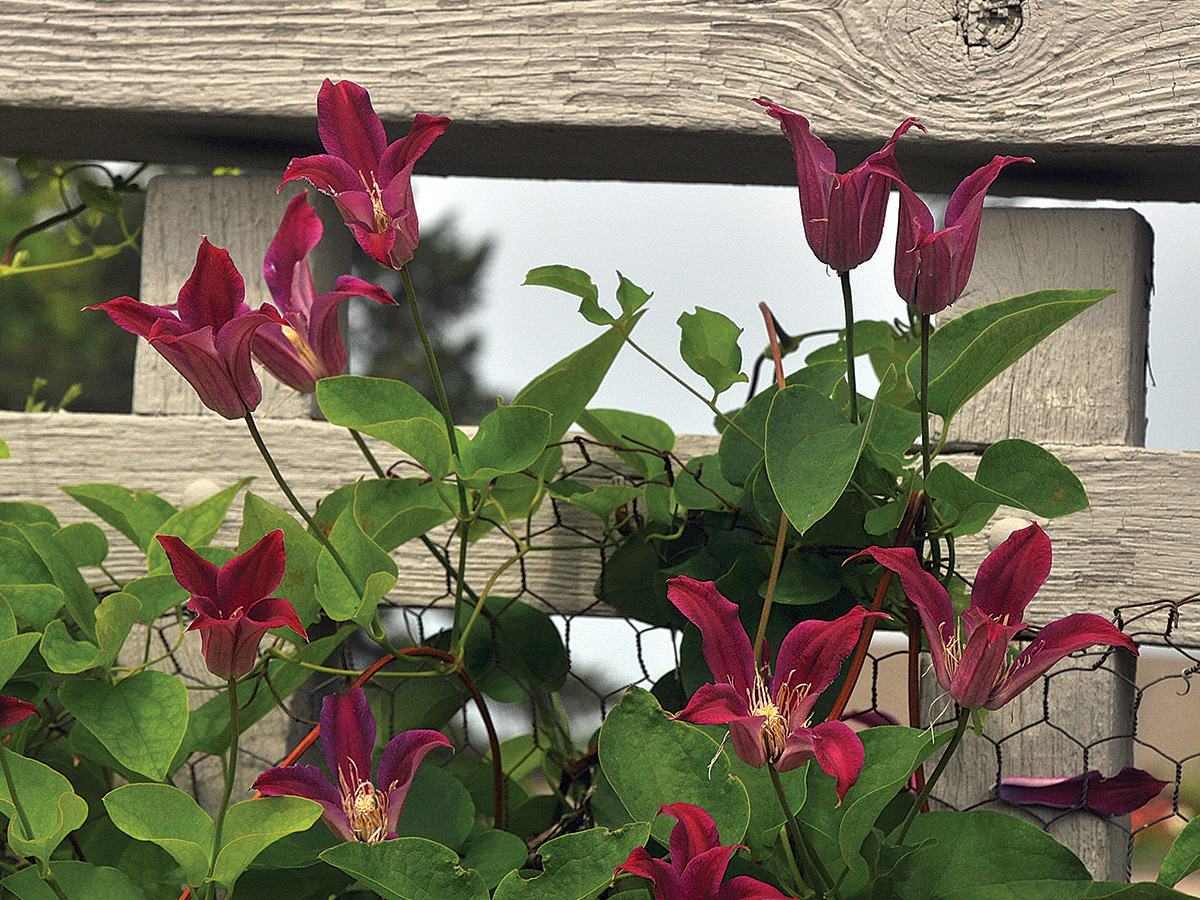
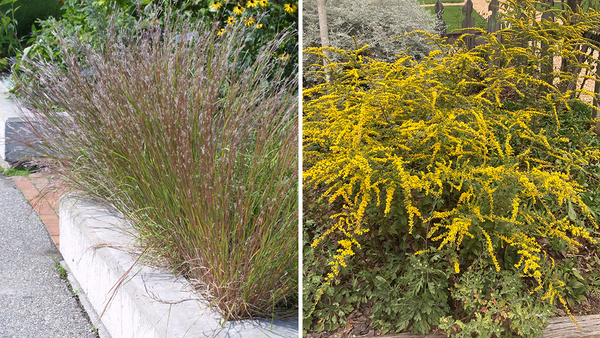
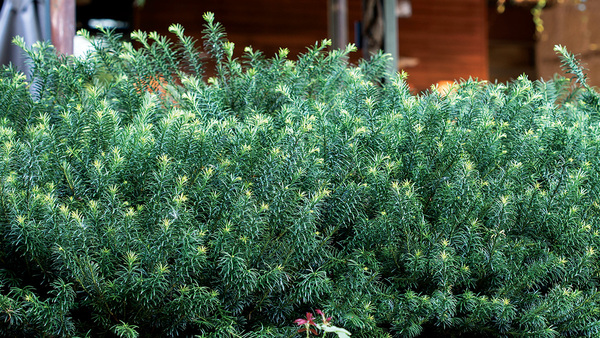


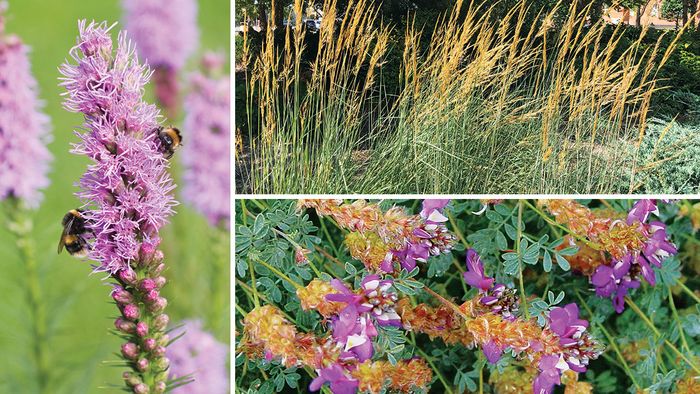

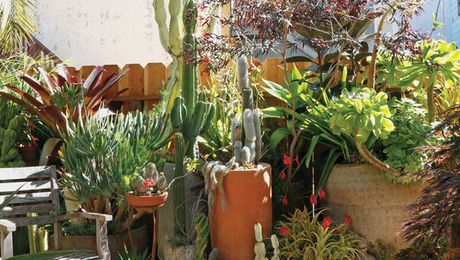










Comments
Log in or create an account to post a comment.
Sign up Log in